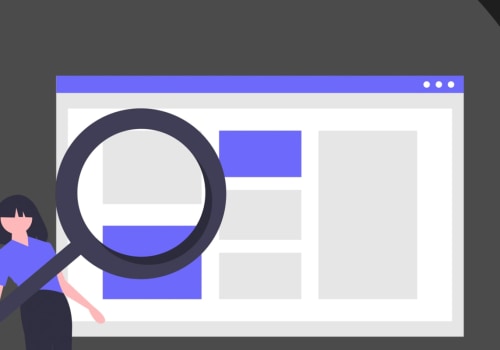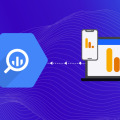Search engine optimization (SEO) is essential for any website looking to maximize its visibility online. One of the most important aspects of SEO is optimizing crawling and indexing, which can help ensure that your website is indexed correctly by search engines and is ranked higher in the search engine results pages (SERPs). This article will discuss the key principles behind optimizing crawling and indexing for technical SEO, providing valuable advice on how to ensure your website is properly indexed and ranked by search engines. Crawling and indexing optimization is one of the most important steps of any SEO campaign. It helps search engines better understand your website and its content, helping you to rank higher in the search engine results pages (SERPs).
This article will provide an overview of crawling and indexing optimization techniques, explaining why they are important and how you can use them to improve your SEO performance. The first step in optimizing your website for crawling and indexing is to ensure that it is properly structured for search engines. This includes making sure that all of your webpages have an accurate page title, meta description, and HTML tags. Additionally, you should create a clear hierarchy of webpages so that it is easy for search engine crawlers to navigate your site. You should also ensure that your website is free of errors, such as broken links or duplicate content.
These can negatively affect your website's performance in the SERPs. In addition to structuring your website correctly, you should also create a well-structured XML sitemap which includes all of the webpages on your site. This helps search engine crawlers find and index all of your webpages more efficiently. Finally, it is important to keep track of any changes you make to your website. You should use tools such as Google Search Console or Bing Webmaster Tools to monitor any changes to your website.
This will help ensure that any new content or changes you make are quickly indexed by search engines. These are just a few of the techniques you can use to optimize crawling and indexing for Technical SEO. By following these tips, you can help ensure that your website is properly indexed by search engines and that it ranks higher in the SERPs.
Creating an XML Sitemap
Creating an XML sitemap is an important step for any website that wants to improve its technical SEO performance. An XML sitemap helps search engines better understand the content of your website and provides a way for them to discover new content quickly and efficiently. It also helps search engines better understand which pages are the most important, allowing them to prioritize indexing of these pages.Creating an XML sitemap involves using a tool such as Google's Search Console or a plugin like Yoast SEO to generate a file that contains the URLs of all of your webpages. This file should then be uploaded to your server and submitted to the search engine so it can start crawling and indexing your website. Once the sitemap is created, it should be regularly updated to keep it up-to-date. Additionally, you should also ensure that all the URLs in the sitemap are crawlable by the search engine.
Tracking Changes with Search Console Tools
Crawling and indexing optimization is an important step for any SEO campaign, as it helps search engines better understand your website and its content.Tracking changes in crawling and indexing can help you understand how search engines are interacting with your website and make adjustments to improve your SEO performance.
Google Search Console
and Bing Webmaster Tools are two important tools for tracking changes in crawling and indexing. Google Search Console provides insights into your website’s performance in Google's search results, including information on how often your website has been crawled, the number of pages indexed, and the average loading speed. It also provides reports on any errors or problems that may be affecting your website’s performance.Bing Webmaster Tools offers similar insights into how Bing is crawling and indexing your website. It’s important to track changes in crawling and indexing over time, as this will help you identify any potential problems or areas for improvement. Tracking changes regularly will also help you ensure that your website is being indexed properly, so that it can be found by potential customers. To track changes in crawling and indexing, use the tools provided by Google Search Console or Bing Webmaster Tools.}
Structuring Your Website for Crawling and Indexing
Structuring your website is an important part of optimizing for crawling and indexing.Properly structuring your site will help search engines better understand your content and index it more quickly and accurately. When structuring your website, it’s important to use HTML structure with tags only for main keywords and tags for paragraphs. Do not use the newline character, as this can cause problems with the way search engines interpret your content. Additionally, make sure that you are not using any duplicate meta tags or content, as this can also cause problems with the way search engines crawl and index your content.
Another common mistake is to use too much JavaScript or Ajax on your pages. This can cause problems with the way search engines crawl and index your content, as they may not be able to interpret all of the code correctly. You should also avoid using any code that is not supported by all major browsers, as this could also cause problems. Finally, make sure that you are using appropriate titles and descriptions on each page of your website.
This will help search engines understand what the page is about and will help them determine how to rank it in the search engine results pages (SERPs). Additionally, ensure that you are using appropriate URL structures, as this can also have an effect on how search engines crawl and index your content. Crawling and indexing optimization is an essential part of any SEO campaign. Structuring your website with HTML tags, creating an XML sitemap, and tracking changes with Search Console tools are all key steps to ensuring your website is properly indexed by search engines and ranked higher in the SERPs. With the right optimization techniques in place, you can ensure your website is properly crawled and indexed, helping you to achieve better SEO performance.






